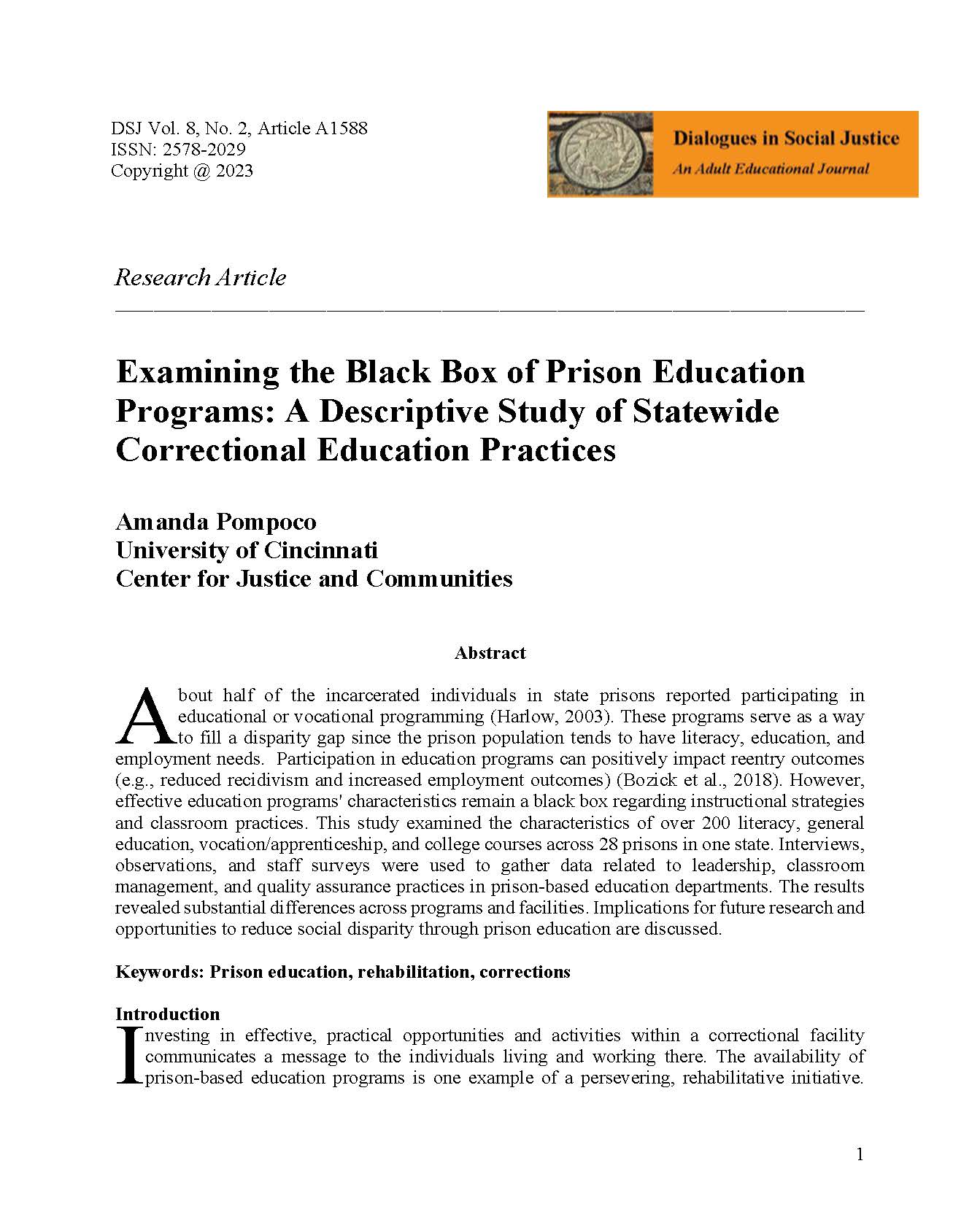Examining the Black Box of Prison Education Programs: A Descriptive Study of Statewide Correctional Education Practices
DOI:
https://doi.org/10.55370/dsj.v8i2.1588Abstract
About half of incarcerated individuals housed in state prisons reported participation in educational or vocational programming (Harlow, 2003). These programs serve as a way to fill a disparity gap since the prison population tends to have literacy, education, and employment needs. Participation in education programs can result in positive impacts on reentry outcomes (e.g., reduced recidivism, increased employment outcomes) (Bozick et al., 2018). However, the characteristics of effective education programs remains a “black box” in terms of instructional strategies and classroom practices. This study examined the characteristics of over 200 literacy, general education, vocation/apprenticeship, and college courses across 28 prisons in one state. Interviews, observations, and staff surveys were used to gather data related to leadership, classroom management, and quality assurance practices in prison-based education departments. The results revealed substantial differences across programs and facilities. Implications for future research and opportunities to reduce social disparity through prison education are discussed.

Downloads
Published
Issue
Section
License
Authors who publish with this journal agree to the following terms:
a. Authors retain copyright and grant the journal right of first publication with the work simultaneously licensed under a Creative Commons Attribution License that allows others to share the work with an acknowledgement of the work's authorship and initial publication in this journal.
b. Authors are able to enter into separate, additional contractual arrangements for the non-exclusive distribution of the journal's published version of the work (e.g., post it to an institutional repository or publish it in a book), with an acknowledgement of its initial publication in this journal.
c. Authors are permitted and encouraged to post their work online (e.g., in institutional repositories or on their website) prior to and during the submission process, as it can lead to productive exchanges, as well as earlier and greater citation of published work (See The Effect of Open Access).

